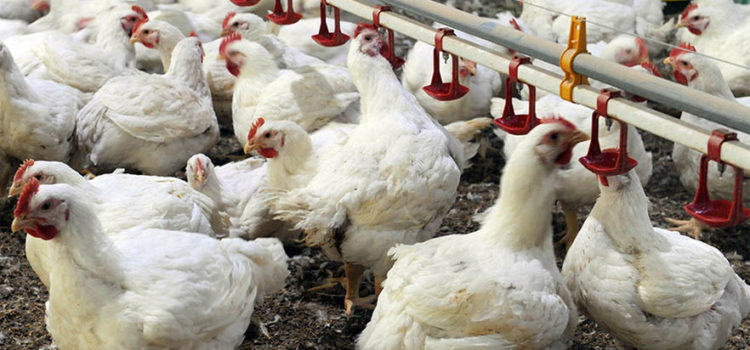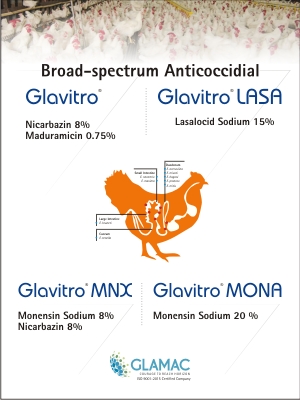After dealing with challenges posed by COVID pandemic, Indian poultry industry is now focusing on key aspects like automation at farm level and adoption of stringent bio-safety norms at the farm so that occurrence of viral outbreak  could be curbed or reduced. The sustained demand because of a spike in online sales and home delivery of chicken and eggs during the current phase of localised lockdowns is good indicators for the future growth of the poultry industry. Training of manpower (those engaged in online sales as well as wet markets who are carrying out home delivery of meat products) on food safety aspects would go a long way in sustaining the future growth of the poultry industry.
could be curbed or reduced. The sustained demand because of a spike in online sales and home delivery of chicken and eggs during the current phase of localised lockdowns is good indicators for the future growth of the poultry industry. Training of manpower (those engaged in online sales as well as wet markets who are carrying out home delivery of meat products) on food safety aspects would go a long way in sustaining the future growth of the poultry industry.
Indian broiler meat industry has been experiencing growth driven by increase in per capita consumption. Poultry, which includes broiler as well as egg sector, is one of the fastest growing segments of the agricultural sector in the country. While crops production has witnessed around 1.5% to 2% annual growth rate in the last decade, eggs and broilers segments have been rising at a rate of 7-10% annually.
The sustained growth in the broiler industry has been the result of technological breakthroughs in breeding, feeding and health, mostly driven by private sector investment. The broiler industry is witnessing growth because of adoption of the integration system which provides opportunities for the rural masses getting support in terms of assured remunerations.
The wet market, which has a major share in distribution and sales of broiler meat, has also witnessed a major shift as consumers are opting for home delivery. This new segment which focuses on ‘home delivery’ is expected to drive consumption of broilers in coming months and is expected to have a significant share of the consumption basket. The wet market now needs to invest on training of manpower as well as equipment to ensure that broiler meat is delivered taking into consideration hygienic and health aspects. One of the biggest segments which has witnessed growth in the last one year has been the ‘online models’ where consumers are ordering broiler meat and products for delivery at home, as a large segment of population are staying at home because of restrictions imposed to control COVID and companies opting for Work from Home (WFH) mode. Various players in the ‘online or home delivery’ segment are growing at significant pace as consumers’ preference for getting poultry meat delivered at home.
The commercial broiler industry is now following the ‘integrators model’ where there is contract with multiple smaller farmers who rear the chicks. The live birds are then lifted by the integrators, either for direct sales via wet markets or for slaughter and further processing. In the contract farming, rearing charge prices are pre-fixed to ensure that farmers are largely insulated from the fluctuations in the market demand. Due to challenges faced by the broiler industry since the beginning of last year, most of the losses incurred due to fluctuations in demand are absorbed by integrators thus helping farmers in tiding over the crisis.
With rising cost of labour, there is greater need for the farmers to adopt automation. Ensuring hygienic environment, adoption of food safety regulations etc. and sometimes non-remunerative prices for broiler meat is posing a challenge to the cost effectiveness. With the adoption of automation, feed wastage / shortage of labour and other inputs could be optimised and reduced. Use of Artificial Intelligence could help to address many challenges, reducing human interference and improve efficiency of poultry farming. The government must step in to provide support to the farmers. The Rs 15,000 crore Animal Husbandry Infrastructure Development Fund announced in June, 2020 by the government should be used for supporting farmers in automation also.
The rising feed costs because of higher rates of feed ingredients, mainly corn and soybean meal, prices are pushing up the cost of production of broilers and eggs. The government must ensure availability of feed raw material, either by discontinuing exports for a few months or allowing import of feed ingredients at zero percentage duty during shortage period so that broiler and egg production remains economically viable.
It is estimated that the poultry sector provides direct benefit to around 10 million maize and soybean growing farmers while around 50 million people are associated with poultry production value chain – trade, feed manufacturing, agriculture crops and logistics.
There is an urgent need for the farmers to follow stringent bio-safety norms. The poultry industry in association with government both at the centre and states should chart out and implement stringent bio-security protocols at the farm levels. Overall, the poultry industry is gearing up for meeting the future challenges through adoption of various measures in bio-safety and ensuring consumer confidence in broiler meat and eggs.
The livestock sector, especially poultry meat, eggs, fisheries & aquaculture, is contributing to the growth of agriculture and allied sectors in the country. For realizing the Government’s aim of doubling farmers’ income by 2022, livestock is playing a paramount role and the government must provide sustained support to the sector. For boosting farmers’ income, the government must provide financial as well as technological support to livestock in general and poultry industry in particular. This would boost the growth of Indian economy in the coming years.
Previous article by author: Bird Flu Scare: Greater Need For Consumer Awareness






